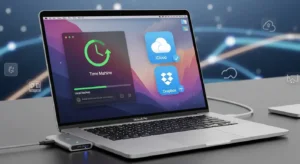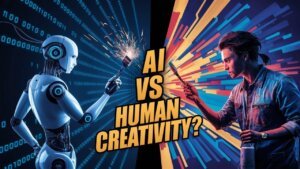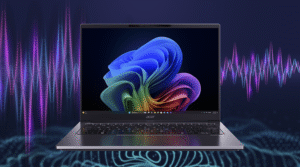It is time to forget all you know about PCs, since the new breed of machines is reinventing the rulebook. Whatever you want to call them: Copilot+ PCs, agentic notebooks, etc., the future: Al Laptops are already here, and they are a new category of device with on-device AI, specially designed NPUs, and even time-saving workflows, rather than time-stealing ones. Considering that your daily routine consists of infinite tabs, stalled export, or the fear of transferring personal files to the cloud to get them examined, then you should read further. That is why it is important and why the transformation of the traditional PCs into the AI-first devices does exist.

To begin with, what is so different about these machines? The core of the change is composed of the NPU a neural processing unit that executes AI models on-the-fly without transferring all requests to a server.
Copilot+ program by Microsoft, chip roadmap by Intel and Qualcomm, and an array of special purpose vendors all come to the same to-put AI acceleration wherever the user is (the device) so that real-time summarization, transcription, and image editing occur instantly and in privacy. Copilot+ PCs by Microsoft specifically position this hardware first pivot: in-built NPUs allow local model inference and low-latency experiences, which cannot be matched by cloud-only systems.
Hardware matters. It is exactly this time that Qualcomm is targeting with Snapdragon X Elite and its successors high parallelism, efficient AI math, and power envelopes making all-day use a possibility.
The outcome: laptops capable of recording multi-speaker meeting transcripts in real time, summarising long documents into 3-day action lists, or running image-editing models in the background as you continue to work – without battery depletion or requiring a round trip to the cloud. It is this type of smooth background intelligence that makes Al Laptops stand apart compared to GPUs attached to conventional designs with bolts.
We are already getting a glimpse of what this is going to appear like in actual real products. New competitors and collaborators like Humain (with the Horizon Pro) are distributing so-called agentic laptops which embed AI workflows in the operating experience instead of gluing an application on top. They combine beefy on-device NPUs with new UI paradigms: an AI key, the persistence of agents, the provision of context-sensitive help that goes beyond prompts and does the real work (think: Plan my trip, compare flights and write the email to my manager and actually have a useful and editable plan). That is a paradigm shift – your laptop is no longer a tool, but an active colleague.
Real users can gain benefits immediately. Students receive immediately generated citations and summary of lectures; journalists are able to transcribe the interview with speaker separation and timestamps that may be searched; creators receive near real-time generative tooling that reduces the time spent in the editing process by a staggering amount.
To professionals the reward is the time saved, fewer context switches, less manual copy-pasting and less cloud uploading. And since a lot of the work is performed locally, sensitive information can be operated in-situ or in a private cloud belonging to an organization, which minimizes exposure. Privacy is another significant selling point to enterprises that are considering moving towards the cloud-centric AI.
But it’s not all rosy. Microsoft has also introduced new features such as the Recall (a Copilot-related feature, which captures periodic snapshots) that have also caused serious privacy concerns and regulatory eyebrows – continuous screen capture content requires mindful opt-in, transparent storage, and robust controls. Granular controls, concise retention policies, and the possibility to audit what models view and perform are what have to be demanded by users and IT admins. In the absence of those safeguards, AI capabilities can easily transform into productivity aids to compliance burdens.
Other considerations include performance tradeoffs and device lifecycle. Not all workflows require on-device inference; even the large model work will continue to be most effectively provided by the cloud GPUs. And even as the latest chips (as well as future Snapdragon X2-class silicon) take the performance envelope even higher, a split is likely: thin-and-light AI laptops focused on low-latency inference compared to workstation rigs that remain focused on raw GPU rendering and training. The selection of the correct device will be based on whether you are majorly interested in interactive AI support or brute-force computing.
Is it the time to upgrade? Whether your pain points are wasted time, poor multitasking, or slow cloud workflows, the response is becoming more and more yes-a properly selected Al Laptops machine can change your day.
When you are a creative and demand heavy offline renders or you value absolute portability as the ultimate value, hold off until next generation to make the balance. Anyhow, the trend is obvious: PCs are not mere boxes anymore, they are intelligent companions.
In brief, leave behind the previous thinking that your computer is simply fast hardware + software. The current change is on the introduction of intelligence at the device phase such that your machine assists you in thinking instead of merely computing. What you see is the new age of Al Laptops that reinvents the way people are productive at the very core of it all – and it is nearer than you think.




